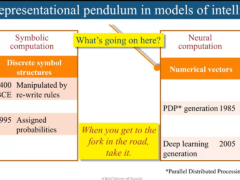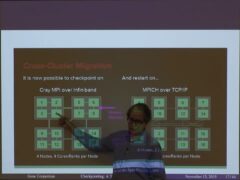The Phase Transition in Random Graphs: A Simple Proof
The classical result of Erdos and Renyi shows that the random graph G(n,p) experiences sharp phase transition around p=1/n – for any ε0 and p=(1-ε)/n, all connected components of G(n,p) are typically of size O(log n), while for p=(1+ε)/n, with high probability there exists a connected component of size linear in n. We provide a very simple proof of this fundamental result; in fact, we prove that in the supercritical regime p=(1+ε)/n, the random graph G(n,p) contains typically a path of linear length. We also discuss applications of our technique to other random graph models and to positional games.
Joint work with M. Krivelelvich
Speaker Details
Benny Sudakov got his Ph.D from Tel Aviv University in 1999 under Noga Alon, had appointments in Princeton University and Institute for Advanced Studies and is currently professor of mathematics in UCLA. He is the recipient of an Alfred P. Sloan Foundation Fellowship, an NSF CAREER Award and was an invited speaker at 2010 International Congress of Mathematicians.
His main interests are Combinatorics and its applications in Computer Science.
- Series:
- Microsoft Research Talks
- Date:
- Speakers:
- Benny Sudakov
- Affiliation:
- UCLA
-
-
Jeff Running
-
Series: Microsoft Research Talks
-
Decoding the Human Brain – A Neurosurgeon’s Experience
Speakers:- Pascal Zinn,
- Ivan Tashev
-
-
-
-
Galea: The Bridge Between Mixed Reality and Neurotechnology
Speakers:- Eva Esteban,
- Conor Russomanno
-
Current and Future Application of BCIs
Speakers:- Christoph Guger
-
Challenges in Evolving a Successful Database Product (SQL Server) to a Cloud Service (SQL Azure)
Speakers:- Hanuma Kodavalla,
- Phil Bernstein
-
Improving text prediction accuracy using neurophysiology
Speakers:- Sophia Mehdizadeh
-
-
DIABLo: a Deep Individual-Agnostic Binaural Localizer
Speakers:- Shoken Kaneko
-
-
Recent Efforts Towards Efficient And Scalable Neural Waveform Coding
Speakers:- Kai Zhen
-
-
Audio-based Toxic Language Detection
Speakers:- Midia Yousefi
-
-
From SqueezeNet to SqueezeBERT: Developing Efficient Deep Neural Networks
Speakers:- Sujeeth Bharadwaj
-
Hope Speech and Help Speech: Surfacing Positivity Amidst Hate
Speakers:- Monojit Choudhury
-
-
-
-
-
'F' to 'A' on the N.Y. Regents Science Exams: An Overview of the Aristo Project
Speakers:- Peter Clark
-
Checkpointing the Un-checkpointable: the Split-Process Approach for MPI and Formal Verification
Speakers:- Gene Cooperman
-
Learning Structured Models for Safe Robot Control
Speakers:- Ashish Kapoor
-
























